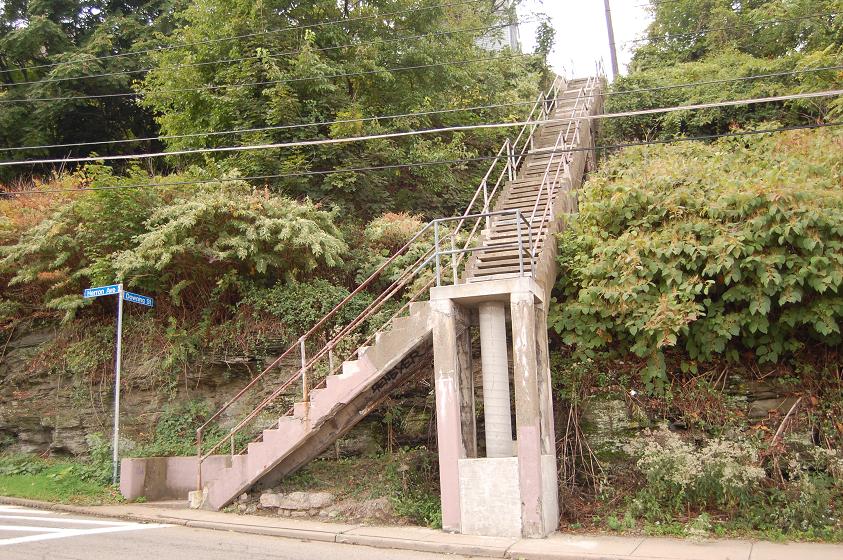Rachel Windsor | July 25, 2023
Perched on the hillsides that surround Pittsburgh’s downtown area are a network of city stairs that have become an iconic feature of the city’s landscape. These stairs, which number over 700 and span more than 44,000 steps, were originally constructed to connect the neighborhoods located on the steep hills. While they were designed to provide an efficient way for people to travel up and down the hills, they have come to mean so much more to the people of Pittsburgh. Today, the city stairs are a cherished part of the city’s identity and a symbol of the city’s commitment to practical solutions that enable people to connect with one another.

Image Source: 90.5 WESA
The stairs of Pittsburgh were originally constructed in the late 19th and early 20th centuries, during a period of rapid growth and expansion in the city. Neighborhoods were often cut off from each other by the hills, which made it difficult for people to travel between them and get to work. In response, the city began to construct a network of public stairways that connected the neighborhoods. These stairs were built by hand, using stone, concrete and other materials, and were designed to provide a safe and efficient way for travel. But the importance of Pittsburgh’s city stairs goes beyond just their practical function. They are also an important part of the city’s cultural heritage and have become a beloved feature of Pittsburgh’s identity. Many of the city’s stairways are adorned with murals, mosaics, and other artworks, which reflect the diverse cultures and communities that live here.
However, the stairs are not without their challenges. Over the years, many have fallen into disrepair due to lack of maintenance. Weathering and erosion have caused some to crumble and become unsafe for use. The cost of repair and maintenance can be significant and funding for these projects can be difficult to secure. And upgrading or replacing these stairs can be challenging due to the complex terrain and limited space available for construction.

Image Source: 90.5 WESA
In response, the city has taken several steps to preserve and maintain this important infrastructure. In recent years, the city has invested millions of dollars to repair and upgrade the stairs, including fixing cracked and broken steps, installing new railings and lighting, and improving drainage systems to prevent erosion. Just this year, the city was awarded $7 million in federal funds to continue repairs. They’ve also partnered with community organizations to create the City Steps Plan, which outlines a strategy for preserving and improving the city’s stairs and includes recommendations for funding, maintenance, and community engagement. Also, the city has implemented a stairway inspection program, which includes regular inspections of the stairs by officials to identify any hazards or issues that need to be addressed.
Pittsburgh’s city stairs serve as a reminder of the importance of useful and functioning infrastructure urban environments. In a world where so much of our attention is focused on high-tech solutions and digital connectivity, it’s easy to forget the value of simple, physical infrastructure like stairs. Yet the stairs of Pittsburgh demonstrate that such infrastructure can be a vital part of a city’s fabric, connecting people to each other and to their surroundings in meaningful ways. They have connected our communities across challenging terrain for over a century. But more than that, they are an integral part of Pittsburgh’s identity, a cherished feature of its landscape, and a canvas for its cultural expression. For these reasons, Pittsburgh’s city stairs are a treasured feature of the city, and a testament to the power of simple, practical solutions.

Image Source: Pittsburgh Magazine
